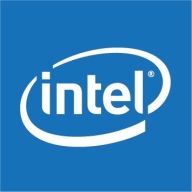

HPE ProLiant DL Servers and Intel Server Systems compete in the enterprise server solutions segment. Users lean towards HPE ProLiant DL Servers for favorable pricing and strong customer support, while Intel Server Systems are preferred for their advanced feature set and performance capabilities.
Features: HPE ProLiant DL Servers offer reliability, energy efficiency, and ease of management. Intel Server Systems provide superior processing power, scalability options, and support for high-demand workloads.
Room for Improvement: HPE ProLiant DL Servers could improve in hardware upgrade ease, system management, and virtualization support. Intel Server Systems need better virtualization support, software optimization, and simplified setup processes.
Ease of Deployment and Customer Service: HPE ProLiant DL Servers are known for easy installation and responsive customer service. Intel Server Systems, despite a more complex setup, benefit from robust customer service that aids in deployment.
Pricing and ROI: HPE ProLiant DL Servers are recognized as cost-effective with a strong ROI. Intel Server Systems, though having higher initial costs, are justified by long-term performance benefits and scalability potential.
| Product | Market Share (%) |
|---|---|
| HPE ProLiant DL Servers | 22.0% |
| Intel Server System | 4.6% |
| Other | 73.4% |

| Company Size | Count |
|---|---|
| Small Business | 54 |
| Midsize Enterprise | 28 |
| Large Enterprise | 98 |
HPE ProLiant DL Servers are known for their reliability, scalability, and robust performance. They deliver advanced management capabilities and excel in handling high workloads, offering cost efficiency and versatile customization options suited for diverse enterprise needs.
HPE ProLiant DL Servers feature a user-friendly design that facilitates quick deployment and efficient maintenance. Their advanced iLO technology supports remote management, allowing users to handle server operations efficiently. Users appreciate the system's compatibility with multiple applications and infrastructures, along with robust support services. Despite these strengths, some models have issues like missing front ports, slow boot times, and a reliance on Java for management tasks. Suggestions for improvement include enhanced power monitoring, refined software, better redundancy, and energy-efficient operation. Many look for improved virtualization capabilities and faster processors. Support and documentation inconsistencies are also noted concerns.
What are the key features of HPE ProLiant DL Servers?HPE ProLiant DL Servers are widely implemented in enterprise and educational settings, excelling in virtualization on VMware and Hyper-V platforms. They support databases like Oracle and MongoDB and are essential for high-performance computing and AI projects. These servers are integrated into system environments, supporting rack and hyperconversion setups effectively.
Storage is simple with the Intel Storage System JBOD2000 family, a 2U form factor system with support for twelve 3.5" LFF or twenty-four 2.5" SFF drives with a single or multi-cable connectivity. The JBOD2000 family includes redundant, hot-swap fans and the option for redundant, hot-swap power supplies. The JBOD2000S2 products support 6Gb/s SAS/SATA connectivity via industry-standard SFF-8088 connectors with the latest JBOD2000S3 version supports up to 12 Gb/s SAS connectivity via industry standard SFF-8644 connectors. All these JBOD offerings are designed to provide highly available and easily expandable storage for Intel servers at an affordable price point.
We monitor all Rack Servers reviews to prevent fraudulent reviews and keep review quality high. We do not post reviews by company employees or direct competitors. We validate each review for authenticity via cross-reference with LinkedIn, and personal follow-up with the reviewer when necessary.